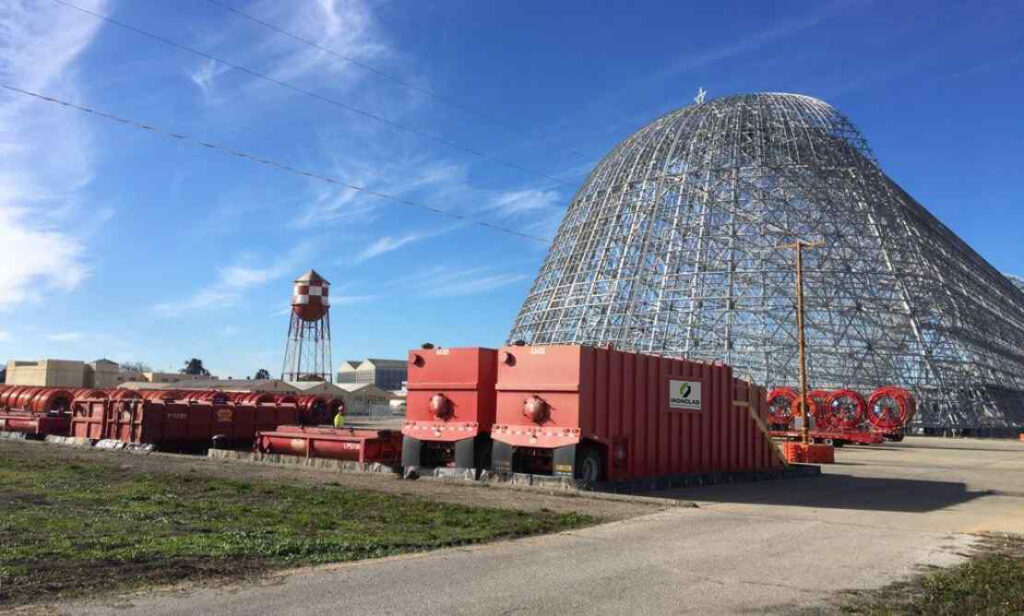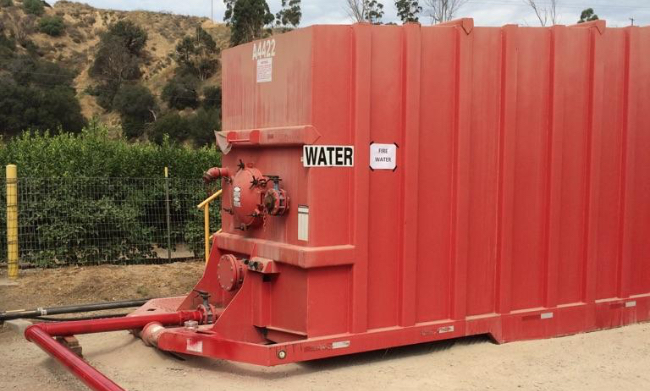Fire Protection Tanks – Understanding Their Benefits, Uses, and Regulations
Fire Protection Storage Tanks – Uses, Benefits, and Safety Regulations
Devastating fires knows no place or time. It just happens without warning. Sometimes the spread is quick, giving you very little time to react and call for help.
Having a fire protection system with water storage tanks can speed up your response time. A proactive business would invest now in fire protection water storage at their facility, rather than paying BIG money later in salvaging the damage caused by fire and fines due to violation of regulations.
Fire protection water storage tanks are in high demand in nearly every industry because they provide the ideal solution for fire disaster prevention and quick recovery. Water storage tanks for fire protection come in different materials, shapes, and sizes. Depending on their application, you can find steel, concrete, or fiberglass tanks (e-glass, directional winding glass, or 24 oz. woven glass). These tanks are bolted to a fixed base and can store thousands of gallons of water.
Uses of Fire Protection Storage Tanks
Every industry and municipality susceptible to fire needs a cost-effective and reliable solution to hold large quantities of water in the vicinity. Here are common instances where fire protection tanks are used.
- Warehouses & industrial units: Industries that work with flammable material and warehouses can face massive damage if they catch fire. In case of a large fire, handheld fire extinguishers are not enough. Water storage tanks are often used to feed into the fire sprinkler systems when the municipal water supply falls short.
- National parks and forests: National parks, county wildfires, and remote forests are not easily approachable by land. Water storage tanks can quickly fill up fire-fighting helicopters using a snorkel without landing so that they can help put out the wildfires.
- Special applications: These include water supply for aircraft hangars, high-piled storage, and high rises in earthquake-prone areas.
- Temporary fire suppression: Construction sites can build a temporary fire protection system until more permanent water mains are installed. A pump rental, combined with accessories such as lay flat hoses and temporary fire hydrants, may also be needed to move water into and out of tanks to areas of need.

Benefits of Fire Protection Tanks
Fire protection tanks have numerous benefits that make them the go-to solution for many industries, municipalities, and warehouses.
- Resistant to weather changes: Fire protection tanks are very sturdy and can store water year-round under various weather conditions. They are made of bolted steel plates that are resistant to corrosion. Welded steel tanks can protect surfaces from corrosion caused by environmental factors.
- Easy integration: Fire protection storage tanks are easily integrated with fire protection systems. Seamless integration makes the whole system reliable. Spare parts can also be made available without hassles and with fewer chances of incompatible components.
- Preparation for Emergencies: Massive fires can happen anytime. You may not be able to get a firefighting team in time, and the municipal supply may not be enough. A large tank filled with water that’s ready to use can save the day.
Safety Regulations of Fire Protection Tanks
National Fire Protection Association 22 (NFPA 22) and American Water Works Association (AWWA D-100 and AWWA D-103) govern the standards for fire protection tanks. Businesses would also need to follow several state, federal, and local water tank installation and security codes.
The NFPA 22 and AWWA standards are defined for every stage, including design, manufacturing, tank erection, insulation, maintenance & repair, dismantling, and relocation.
Certain standards also define the location of the water storage tank and the rate of flow of water. For example, the San Diego county fire authority states that for an exposure distance of over 100 ft., a minimum of 250 gallons of water per minute is required. For adjacent buildings, 2,500 gallons per minute is required.
The NFPA also requires that the fire outlet of a 20,000-gallon tank be at least 6 inches and sit 6″ above the tank’s floor. Handrails and caged spiral staircases must follow OSHA standards. There is a host of such safety standards that fire protection tanks need to comply with.
Maintenance of Fire Protection Tanks
Fire protection water storage tanks need regular maintenance. Chapter 9 of the NFPA 25 defines the maintenance standards for storage tanks. This includes external and internal inspection of the tank. Here’s a brief look at some inspection standards.
- Water levels: The water level should be checked quarterly for tanks with a supervised water level alarm. Monthly checks are needed for tanks without an alarm.
The temperature of the water: The temperature needs to be maintained at a minimum of 40 degrees F to prevent it from freezing, for which a heating system is usually required. - Heating system inspection: Heating systems are fueled by steam, gas, coal, electricity, or solar power. Daily inspection is recommended for systems with no electric supervision system and quarterly inspection for those with a supervised system.
- Exterior inspection: The supporting structure, foundation catwalks, ladders, and vents of the storage tank need to be inspected for any damage or weakening. They also need to be checked for degrading paint, ice build-up, leaks, and cracks.
- Interior inspection: Tanks without corrosion protection need to be inspected every 3-years, and every 5-years for tanks with coverage. They also need to be checked for pitting, rot, debris, aquatic growth, failure of interior coating, and blockage of the anti-vortex plate.
Interior inspection can be particularly challenging because the fire protection tank is mostly filled with massive quantities of water. When this occurs, steel frac tanks are used for temporary storage for water until the main fire protection tank is inspected and repaired, if required. In case of an emergency, water can be directly sourced from the frac tanks to handle a fire breakout.
Conclusion
Water storage tanks for protection against fire are an ideal and most preferred solution by industries like power plants, municipalities, and warehouses because of their apparent benefits and ease of use. However, these tanks are subject to a range of compliances like NFPA 22 standards that need to be met regularly to avoid penalties.
Safety measures and recommendations for water tanks are for the benefit and safety of businesses, people, and property. Fire water storage tanks need to be checked and verified by the engineering team from a certified agency. If you have not yet considered investing in a fire protection tank, you will need to consider the above aspects and make an informed decision.
If you have water storage tanks at your site that need an inspection, maintenance work, or replacement, or if your fire protection tanks develop a leak, get in touch with Ironclad Environmental Solutions for rapid spill containment and emergency storage solutions.
For more information, contact us. Our staff members will be happy to help you out. Or, request a free quote by filling one of our contact forms with your project’s details and the location.
